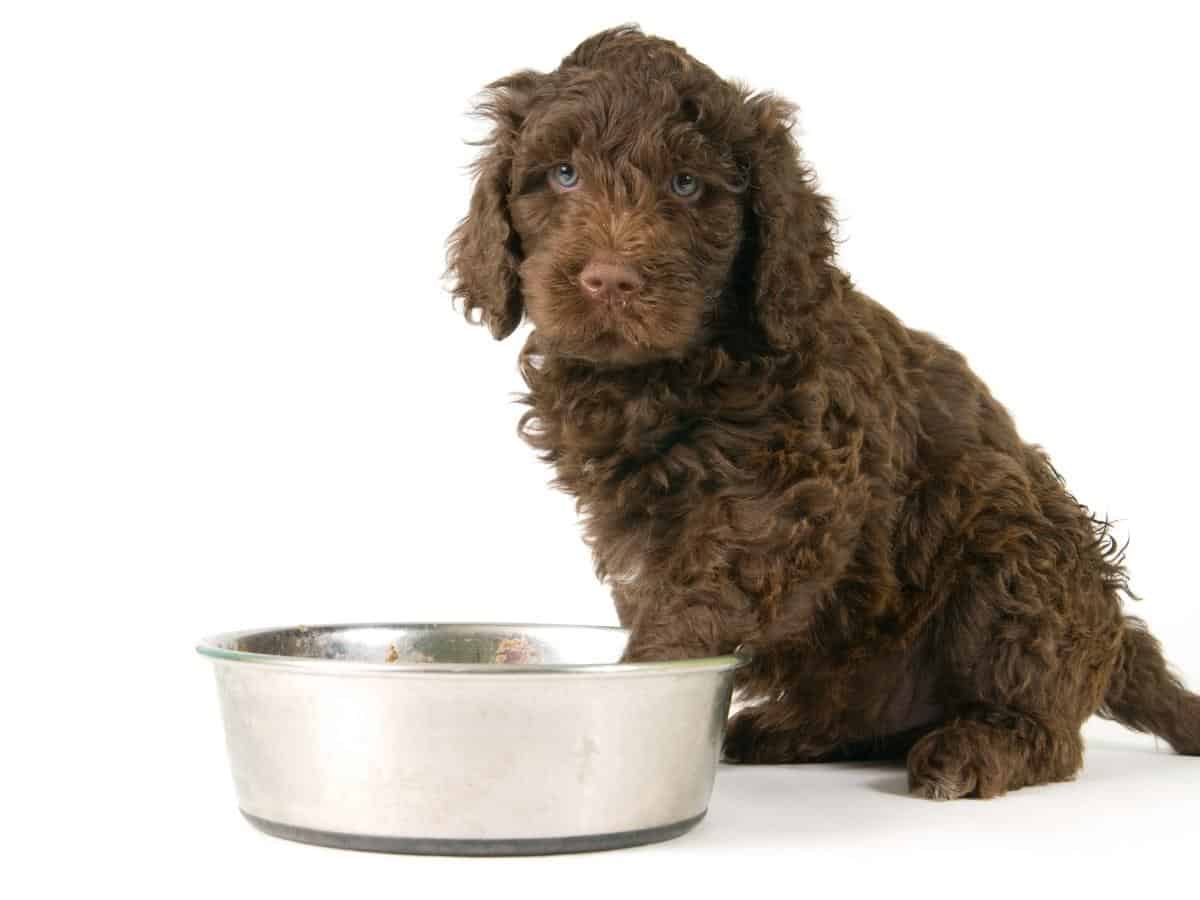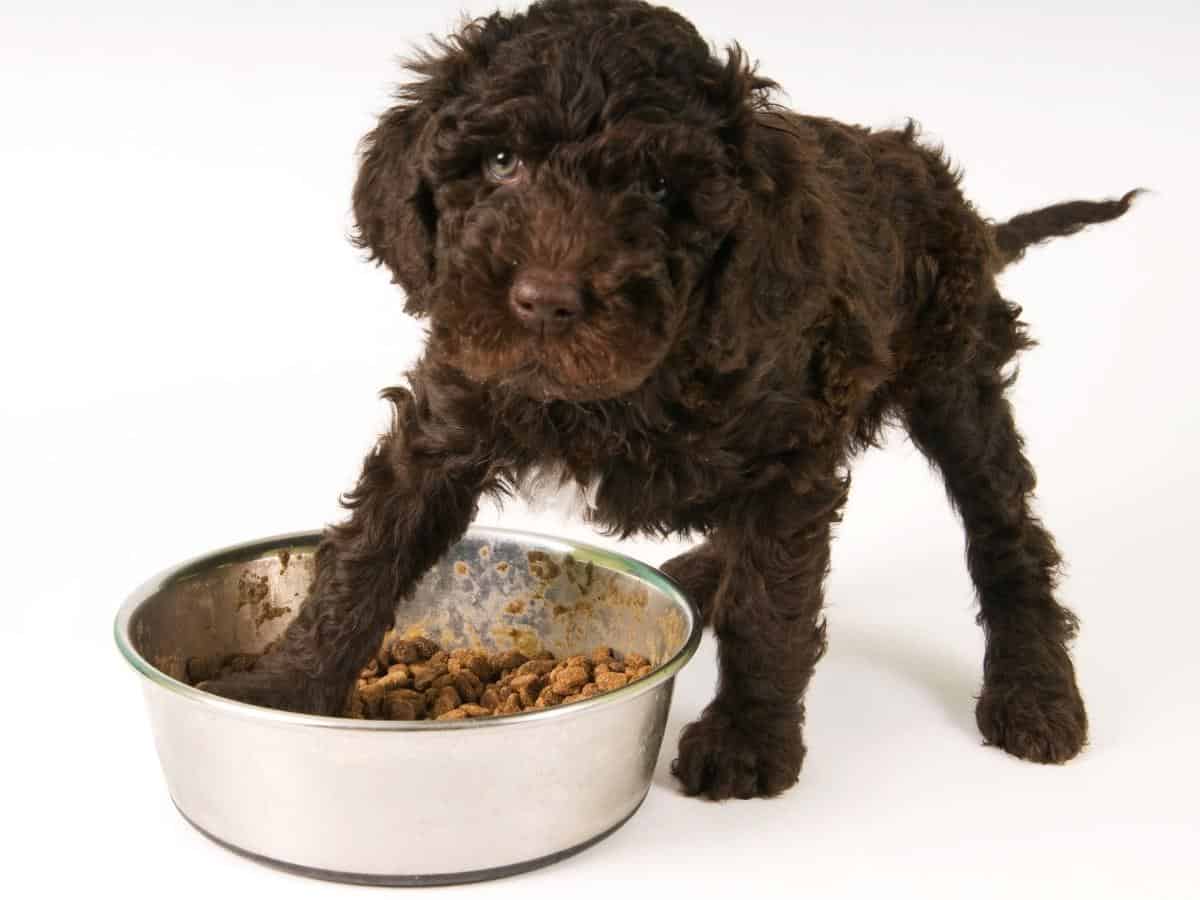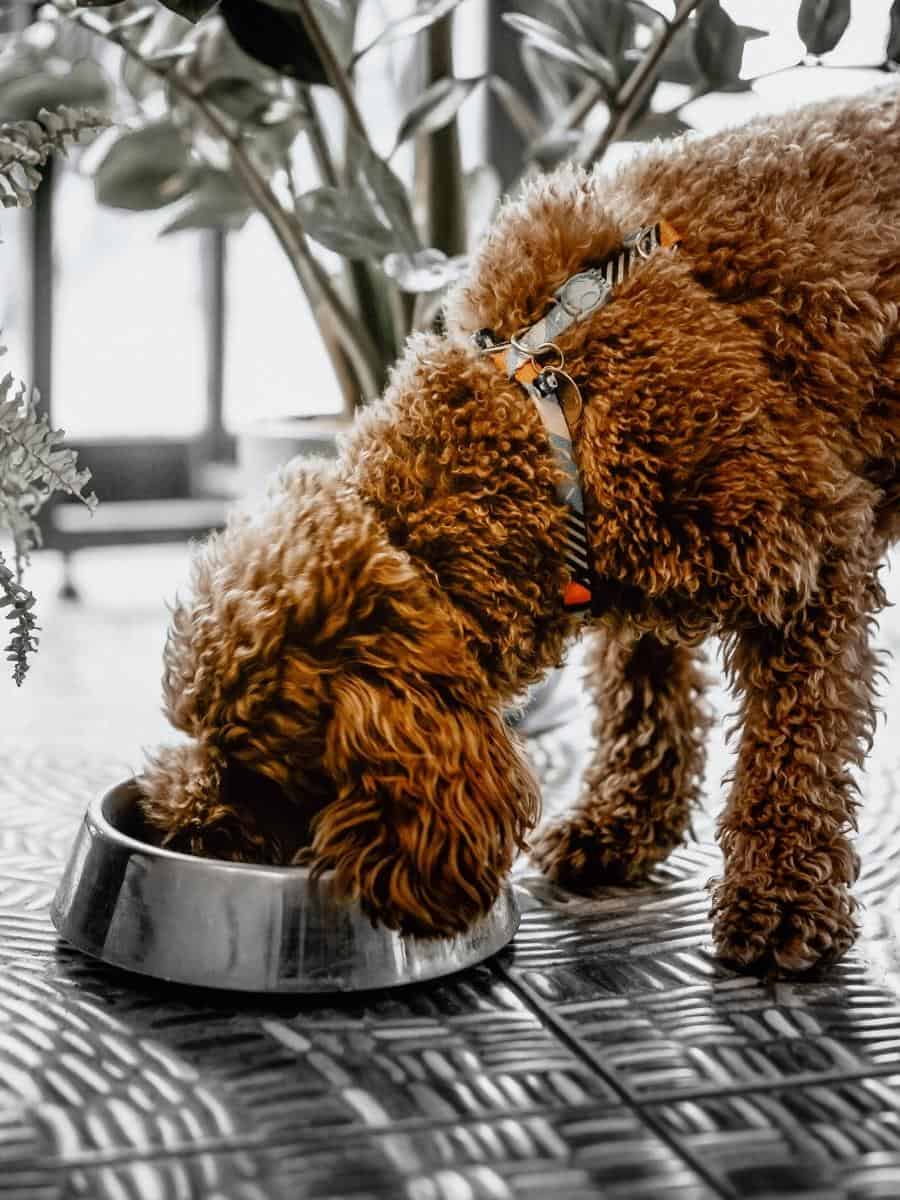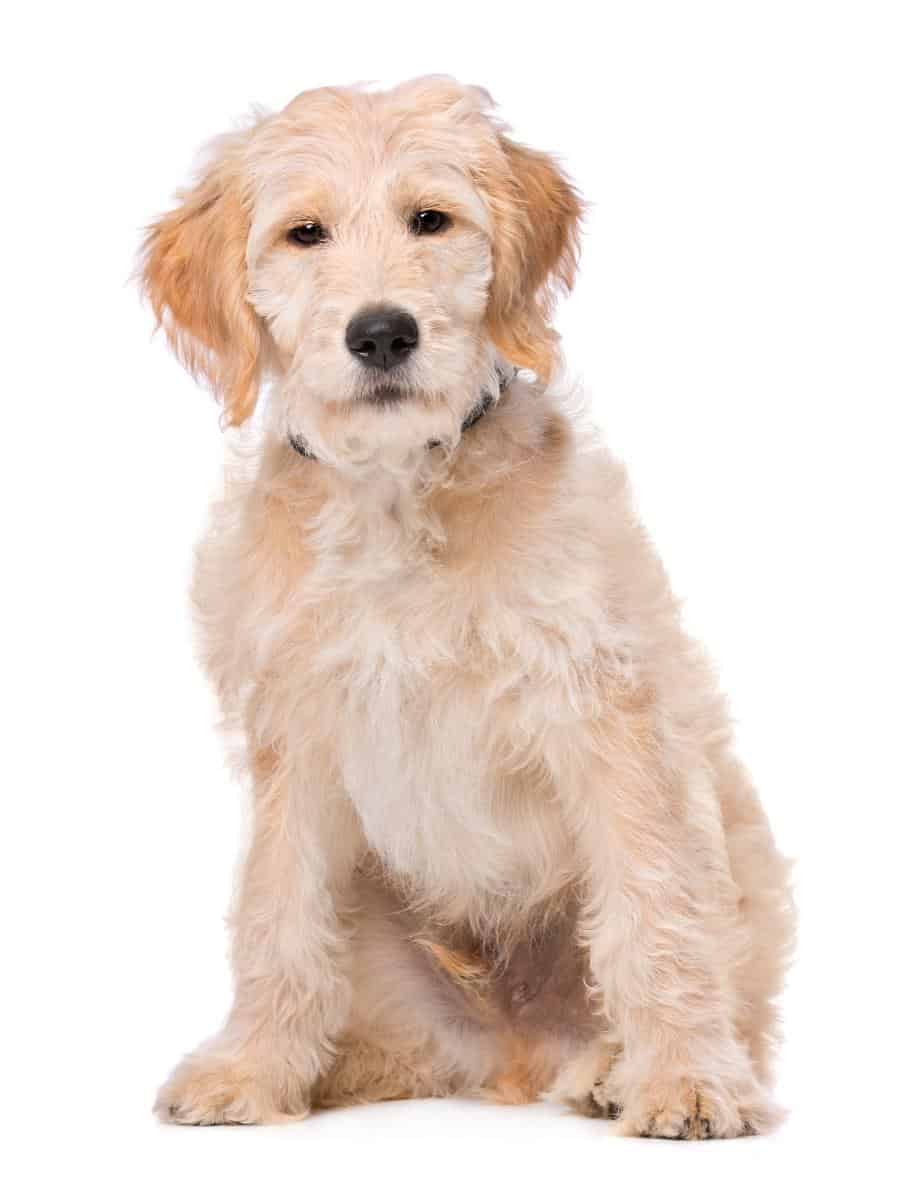Labradoodles generally love eating, so it can be upsetting when your dog isn’t eating his food and has lost his appetite. If you’ve noticed a change in your Labradoodle’s eating habits recently, the good news is that it doesn’t always have to be cause for significant worry, as there are many reasons he might be avoiding his food bowl. So, why won’t your Labradoodle eat?
Your Labradoodle won’t eat if he is sick, has dental pain, has a medication reaction, has a sensitive stomach, or is nervous or stressed, e.g., due to new surroundings or loud noises. He might also be bored with his existing food, have a slowing metabolism, or a diminished appetite in old age.
I know how stressful it can be when your precious Labradoodle suddenly loses interest in his food. But don’t worry as in this article, we’ll look at:
- Why your Labradoodle won’t eat
- Tips to get your Labradoodle eating again
So, if you want to learn exactly why your Labradoodle won’t eat and, more importantly, what to do about it, you’ll love this guide. Let’s get started!

Why Won’t My Labradoodle Eat?
The beloved Labradoodle dog breed has become increasingly popular since it was initially bred to be a hypoallergenic guide dog. Neither a purebred Labrador nor a Poodle, but developed to include the best qualities of both breeds, everyone loves this fluffy ball of fun.
Labradoodles are friendly, intelligent, devoted, energetic, and affectionate. But as with all dog breeds, they come with certain health conditions such as ear infections, hip dysplasia, or allergies. What if your Labradoodle suddenly loses his appetite or becomes a picky eater?
Typically, your Labradoodle won’t abruptly stop eating. However, your responsibility as a pet owner is to determine the cause of your dog’s food refusal so that you can implement the required changes.
The causes of your Labradoodle not eating are:
- Bored with existing food.
- Reduced appetite due to age.
- Dental discomfort or pain.
- Separation anxiety or stress.
- Becoming a fussy eater.
- Feeling unwell or a reaction to a medication.
- Prefers eating at certain times.
You must consider other possible reasons why he’s not eating before you assume he is just not as hungry. Let’s take a look in more detail at the more common reasons why your Labradoodle stopped eating his food:

1. Bored With Existing Food
Like humans, our canine friends can get bored eating the same food daily. If your Doodle slowly loses interest in eating, you should try different things to mix it up. You can try the following:
- Buying another brand or flavor of dry food.
- Adding wet food to dry food and serving it as a mix. This is my preference.
- Adding water to dry food.
- Soaking dry food in warm unsalted chicken broth.
- Adding toppings such as meat, fish, veg, or plain yogurt.
You can also see if your dog is willing to eat some scraps of meat or treats, which can help ascertain if the food is the issue.
If he is happy to take “human foods” from you, then you know that the loss of appetite in your Labradoodle is behavioral – it’s funny how doggos regain their appetite when it comes to human food or tasty treats!
Ensure you feed good quality food, as you’ll get better results in the health and appetite departments. Do you want to know the specifics determining the difference between high-priced and low-cost dog food? Check out this article for greater insight, Cheap vs. Expensive Dog Food (Key Differences).
However, if your Labradoodle is suddenly refusing all food, the most likely cause is that they are unwell or in pain, and your dog will require a visit to the vet.
2. Reduced Appetite Due To Age (Senior Dog)
With age, dogs tend to lose their appetite and might lose a little weight. This is normal, as aging can bring physical changes that may affect your Labradoodle’s appetite. Choosing dog food for seniors can significantly help with appetite issues.
However, not all mature dogs may benefit from switching to a senior diet, but it’s undoubtedly something you can test.
Make sure to choose a good quality brand with sound ingredients and in their correct proportions. Contrary to popular belief, a reduced protein diet is unsuitable for an older dog. In fact, it can contribute to lower muscle loss.
Additionally, suppose your dog has one of the aging-related diseases such as osteoarthritis, diabetes, or dental issues. In that case, dietary changes may help improve symptoms or even slow down the progression of the disease.
If your Labradoodle is on the larger size (i.e., mixed with a standard Poodle), you should consider selecting dog food specifically for large breeds. Go for something like Hill’s Science Diet, Large Breed for Seniors from Amazon.
Vets highly recommend this dog food which I find is a massive factor when I’m looking for a pet product to recommend. It also has thousands of favorable reviews from happy owners.
3. Dental Discomfort or Pain
If your Labradoodle suddenly stops chowing down on his dry kibble, it may be because the food is hurting his mouth. This could result from a broken tooth, an abscess, or gingivitis.
If that’s the case, you should try softening his kibble by adding warm water or temporarily switching to some soft food before taking him to the vet to examine his mouth.

4. Separation Anxiety or Stress
You and your Labradoodle are attached at the hip, but you know how anxious, scared, and nervous he gets when you’re not around, especially if your dog is exceptionally clingy.
If your Labradoodle spends long periods alone at home, he might experience separation anxiety, which would directly inhibit his natural appetite.
Stress and anxiety due to other causes can also cause your doggo to refuse their food, even their favorite treats. Their appetite is suppressed when their “fight or flight” response is activated. Some examples of stress and anxiety in dogs include:
- Significant changes in their home environment. E.g., a house move, bereavement, or being rehomed.
- Environmental stressors. E.g., fireworks, thunderstorms, or nearby loud construction noise.
- A change of routines. E.g., feeding times, exercise times, or an owner suddenly working night shifts.
Management and treatment of canine separation anxiety include early and ongoing socialization, consistent household routines (including regular meal times), and systematic desensitization and counterconditioning.
Check with your vet about ways to reduce your Labradoodle’s anxiety, as calming treats or prescription medications are options if everything else has failed.
5. Become a Fussy Eater
Wouldn’t it be great to buy a 30-pound (14 kg) bag of dry dog food every month and feed it to your Labradoodle for years to come?
Unfortunately, your Doodle might not be eating because he’s become a fussy eater. Why will he settle for dry dog kibble if he’s used to getting treats or table scraps as a snack?
And if you offer treats to entice your Labradoodle to eat, you are turning him into a fussy eater!
Too many treats can cause disinterest in your dog’s regular food and contribute to canine obesity. Treats should be your best friend’s dessert, not their main course.
The fact is, it’s the owner who is generally responsible for making their dog a picky eater. Dogs are not naturally fussy with their food. Now and again, a little healthy treat is just fine. You can also substitute store-bought treats for some safe fruit or vegetables, such as apples, strawberries, carrots, or green beans.
6. Feeling Unwell or a Reaction to Medication
Fighting any illness or condition can be tough on your Labradoodle, causing them to lose interest in their food temporarily. It’s crucial to discuss your dog’s health and well-being with a veterinarian to determine whether a medical condition may cause their lack of appetite.
Additionally, if your dog has an undiagnosed food sensitivity or allergy, they may find that their food upsets their stomach, making mealtimes unpleasant.
Your Labradoodle may have also eaten something toxic while in the yard or roaming in the fields. Dogs are known for eating anything they can get their paws on; some will even get into the garbage to see what they can quickly snaffle.
Dogs must not eat foods like chocolate or grapes as they can be highly toxic. Never leave these lying around where your dog can reach them.
If your Labradoodle has had his recent vaccinations, sometimes these can cause adverse reactions, including loss of appetite. The good news is this should only be brief – ensure your dog is drinking plenty of water to keep hydrated.
“Dogs need access to clean water at all times, and I like to give my dog fresh water every few hours.”
World of Dogz
If your Labradoodle is struggling to keep hydrated and you’re worried, you can always get a pet water fountain as the free-falling stream of water entices your dog to drink.
I like the Petsafe Drinkwell from Amazon as it’s the perfect size for Labradoodles; it looks great and even comes with carbon filters to remove bad tastes and odors from the water.
7. Prefers Eating at Certain Times of the Day
Just like you might not like to eat your breakfast at 6 a.m., your dog might make a habit of only eating at certain times of the day. Though this can be concerning at first, you should keep track of how much food in total your Labradoodle is eating throughout the day.
If your dog still eats about the same amount, he might prefer to eat at specific times of the day.
My dog used to eat one meal in the morning and one in the evening. However, as a senior dog, she now prefers to eat both meals in the evening. She won’t eat them all in one go (and this is not recommended to prevent bloating), but she will eat them within 2-3 hours, which is okay.

How to Get Your Labradoodle Eating Again
So, now that you believe you might know why your Labradoodle isn’t eating, it’s time to make some changes to see if you’re right. Here are the next steps.
Change Your Labradoodle’s Feeding Behavior
You’ll first want to see if his current food is the problem by switching to a new feeding style.
Here’s what you can do to change your Labradoodle’s feeding behavior:
- If you have been hand-feeding your dog, try stopping for a while.
- Take your dog on a long walk before feeding – so he works up an appetite.
- Don’t feed your Labradoodle an hour before or after exercise – this also helps prevent bloat (GDV).
- Change your Labradoodle’s bowl, as some dogs don’t like to see their reflection in stainless steel or glass bowls. Try switching to a ceramic one instead.
- Always ensure your dog’s bowl is clean.
- Give your doggo lots of praise when he eats from his bowl.
- Make feeding time fun – try putting a lid on his food, so he must remove it first. Make it into a game.
- Keep your dog’s mealtimes separate from yours and keep him out of the way while your family is eating – that way, you won’t be tempted to give him table scraps!
- Try an interactive dog feeder that can make your dog’s mealtimes fun. They’re perfect if your dog is easily distracted by his environment. Check out the Outward Hound Fun Feeder on Amazon. It gets over 105,000 top reviews!
- If your dog refuses his meal, remove his bowl away after 10-15 minutes and then only put it down again a few hours later.
- Limit treats to training times only.
You must maintain your composure and self-assurance when you alter your Labradoodles’ feeding habits. He can become upset and stop eating altogether if he perceives that you are worried and stressed about his appetite loss.
Watch This Fun Video on How to Get Your Dog to Eat…
If your Labradoodle is still not interested in eating and other feeding behaviors have started to change, you might want to call your vet and have him checked over. As mentioned, a sudden lack of appetite and resulting weight loss can signify other issues.
Switch Your Labradoodle’s Food
If your dog slowly loses interest in his food over a few weeks, he might no longer enjoy his current meals. Here are some ways to target his diet and boost his loss of appetite.
- Choose a more fragrant food. If you take a whiff of your dog’s current food and find the smell unappealing, your dog might also do so! Try picking food that smells more like meat and has a more intense aroma – feeding highly palatable food in a stress-free environment.
- Add wet food or soak dry food in warm water to increase dietary moisture. These methods will change your dog’s food texture, taste, and smell. The more the food smells and tastes like meat, the more likely he’ll want to eat it.
“When my dog is temporarily off her food, I find that adding a wet food topping always does the trick.”
World of Dogz
Sometimes I’ll add a little chicken, meat, or a blob of natural yogurt. Hopefully, these steps will also fix your situation and return your dog to his regular eating habits.

Take Your Dog to the Vet
Vet visits can be pricey, but so can the treatments used to address any diseases or conditions your dog may be dealing with right now. A decent pet insurance coverage should always be in place since this will always provide you peace of mind.
Remember: Your dog’s appetite and weight loss will harm his health, but if they directly result from some other underlying issue, you will need to tackle the root cause of your dog not eating properly. Here are some conditions and diseases that your vet will look for:
- Hypothyroidism
- Cancer
- Kidney or liver failure
- Infections
- Mouth/teeth issues
- Gastrointestinal problems
Your veterinarian should be able to identify the problem following a thorough examination and a discussion about your Labradoodle’s changed feeding habits. Don’t panic; you’ll work out a treatment plan, and your dog will hopefully resume eating normally soon.
Final Thoughts
It’s not exactly typical for your Labradoodle to stop eating, but it’s also not uncommon. When your Labradoodle stops eating, you need to take the necessary steps to figure out the root of the problem and how to fix it. Here’s a recap of what you can try:
- Switch your Labradoodle’s food or food type if he’s bored.
- Add wet food or warm water to boost his appetite and make his food more palatable and fragrant.
- Keep an eye on your dog’s other behaviors to see how his mood and movements have changed.
- Call the vet and schedule an appointment to have him checked over.





